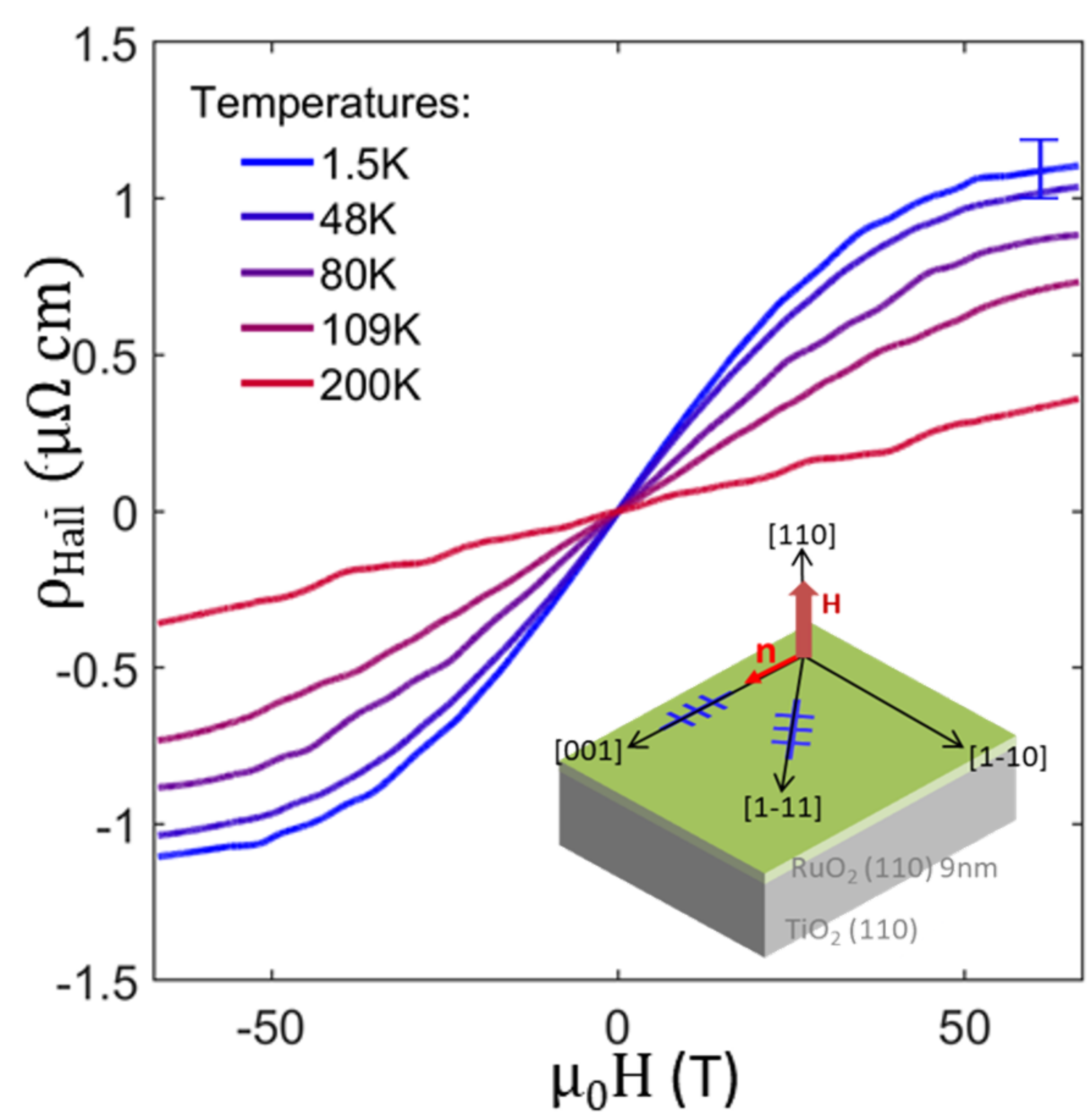Tommy Kotte, HLD.
The conventional classification of magnetic materials has long been based on their distinction as either ferromagnetic or antiferromagnetic, determined by the presence or absence of a discernible net magnetic moment. In the ferromagnetic state, the break of timereversal symmetry, coupled with spontaneous spin polarization in the electronic band structure, manifests in phenomena such as an anomalous contribution to the Hall effect or the generation of spinpolarized currents.
Traditionally, it was widely believed that these effects were exclusive to ferromagnetic states and did not manifest in ordinary collinear antiferromagnets. However, recent advancements have brought to light a new category of magnets known as „altermagnets“. These intriguing materials break time-reversal symmetry without exhibiting a net magnetic moment. Within altermagnets, a specific symmetry emerges: opposite magnetic moments are situated on crystal sublattices interconnected by rotation symmetries. This unique configuration results in alternating spin polarization in both real and momentum-space electronic structures, thereby giving rise to the aforementioned anomalous Hall and spin-current effects seen in ferromagnets.
In this study, a team of researchers from Germany, Czech Republic, New Zealand, and UK have studied at HLD the emergence of an anomalous Hall effect (AHE) in RuO2, serving as a prototype for an altermagnet. In this material, symmetry excludes an AHE when the Néel vector points along the magnetic easy axis [001]. However, when a magnetic field is applied along the [110] direction, it induces a continuous rotation of the Néel vector towards the [110] axis, where an AHE is anticipated by theory.
Indeed, when measuring the Hall resistivity as a function of magnetic field applied along [110] (Figure), a robust nonlinear AHE contribution is observed that saturates above about 50 T. This threshold field signifies the point at which the Néel vector aligns along the [110] direction and is given by the interplay of the exchange interaction, the magneto-crystalline anisotropy, and the Dzyaloshinskii-Moriya interaction. It is important to note that the observed AHE contribution cannot be attributed to a field-induced ferromagnetic component, as this has been demonstrated to be linear and small within this field range. Instead, it purely stems from the unique topology of the RuO2 magnetic structure.
The presented study sheds light on the rapidly advancing field of altermagnetism and contributes to our understanding of its potential future application in spintronic devices that are resilient to magnetic field perturbations and do not require a finite magnetization.

Figure: Hall resistivity of RuO2 as a function of applied magnetic field at different temperatures. The anomalous Hall effect (AHE), which remains stable up to 100 K, is observed as an S-shaped contribution to the Hall resistivity. Inset: Geometry of the studied thin-film RuO2 sample.
Saturation of the anomalous Hall effect at high magnetic fields in altermagnetic RuO2 , T. Tschirner, P. Keßler, R. D. Gonzalez Betancourt, T. Kotte, D. Kriegner, B. Büchner, J. Dufouleur, M. Kamp, V. Jovic, L. Smejkal, J. Sinova, R. Claessen, T. Jungwirth, S. Moser, H. Reichlova, and L. Veyrat, APL Mater. 11, 101103 (2023).
Contact: t.kotte@hzdr.de






